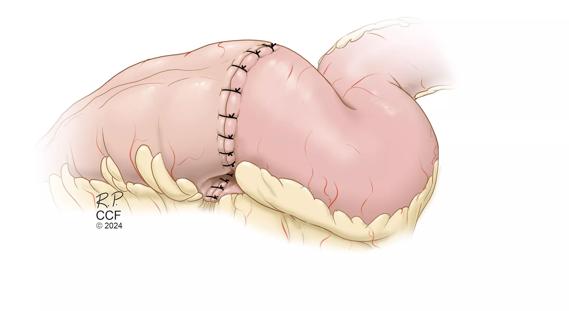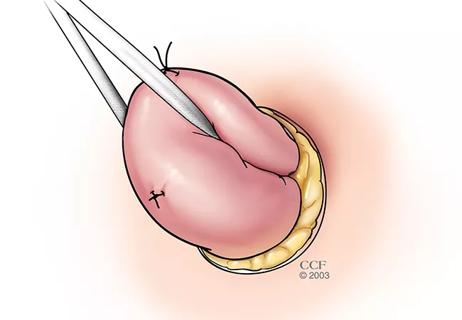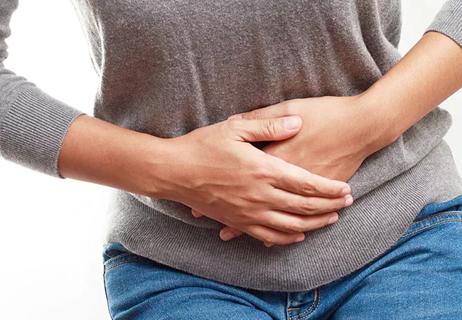Study utilizes prospective data from the RISK cohort

Advertisement
Cleveland Clinic is a non-profit academic medical center. Advertising on our site helps support our mission. We do not endorse non-Cleveland Clinic products or services. Policy
One of the major clinical issues facing pediatric gastroenterologists is the ability to optimize therapies in children living with Crohn's disease. Crohn's disease is a form of inflammatory bowel disease (IBD), which is a group of chronic relapsing diseases that lead to chronic inflammation in the gastrointestinal tract.
Children with Crohn's disease tend to have more severe disease than adults and suffer more frequently from related complications. Approximately 1 in 3 children with Crohn's disease will develop pain and inflammation in the perianal area, including fistulas. This can have a significant impact on the child's quality of life as a source of discomfort and negative body image.
Perianal fistulas are difficult to treat often requiring surgical interventions with examinations under anesthesia for seton placement and drainage of abscesses as well as medical therapies, including biologic agents and antibiotics.
Recognizing the realities of living with a perianal fistula for children (and adults), we wanted to determine if there were ways we could decrease the likelihood or even prevent their development in children with newly diagnosed Crohn's disease. This work was built on prior research by my colleagues at the University of Michigan (and research collaborators for this study), utilizing U.S.-based insurance administrative claims data.
Dr. Jeremy Adler and colleagues found early use of corticosteroid-sparing therapies, such as immunomodulators and/or biologic medications, was associated with a significant (~ 60%) reduced risk of developing perianal fistulas in patients ages 5 to 24 years with Crohn's disease. 1
Advertisement
However, given that this work was based on claims data, we felt it was important to address this question by utilizing prospective data from the RISK cohort of the Crohn's and Colitis Foundation-funded PRO-KIIDS research network. The RISK cohort is a multicenter prospective treatment-naive inception cohort of children (N = 913) newly diagnosed with Crohn's disease between 2008 and 2012.2
Children enrolled in the study have detailed demographic and clinical data along with biologic samples, including blood, stool and intestinal mucosal biopsies. Treatment was not dictated by the study; it was selected by the physician in partnership with the patient and their family.
In our study, we first evaluated early treatment patterns to determine if early therapy could prevent perianal fistulas. Patients with perianal fistulas at diagnosis were included, allowing us to evaluate if early treatment could prevent the development of perianal fistula later in the disease course. Propensity score matching was used to ensure that we were comparing like patients to like patients.
We created three groups of patients with similar characteristics, differing in the initial treatment they received. These included patients who were started on:
The final cohort studied included 149 patients in each of the three treatment groups who were otherwise similar to one another outside of the specific treatment utilized.
After adjusting for patient characteristics, the presence of perianal lesions at the time of diagnosis (large perianal skin tags +/- fissures) was the only significant predictor of increased risk of developing perianal fistulas. These patients had a four-fold greater risk.
Advertisement
Next, we evaluated the types of early treatment in patients and found that early anti-TNF treatment reduced the risk of developing perianal fistula by 95%. No other early treatment reduced the risk of perianal fistula development, including immunomodulators, antibiotics, corticosteroids, exclusive enteral nutrition and aminosalicylates (5-ASA) therapies.
Furthermore, early initiation of anti-TNF therapy was effective at preventing perianal fistulas even in the children with the highest risk: those with perianal lesions at the time of diagnosis. In our analysis, we determined that 14 to 16 children with Crohn's disease need early anti-TNF treatment to prevent the development of perianal fistulas later in their course of disease.
Perianal fistulas can have a serious impact on children (and adults) with Crohn's disease. The pain and decreased quality of life can be debilitating. Surgical intervention is often required when fistulas are medically refractory. It is critical to find ways to intervene early and prevent development and related complications.
Our findings in this group of newly diagnosed children with Crohn's disease underscore why early anti-TNF therapy should be recommended for all children with Crohn's disease, especially those with perianal lesions. Future directions include better delineation of precise timing with anti-TNF therapy.
References
1) Adler J, Lin CC, Gadepalli SK, Dombkowski KJ. Association Between Steroid-Sparing Therapy and the Risk of Perianal Fistulizing Complications Among Young Patients With Crohn Disease. JAMA Netw Open. 2020 Jun 1;3(6):e207378. doi: 10.1001/jamanetworkopen.2020.7378. PMID: 32515798; PMCID: PMC7284306.
Advertisement
2) Kugathasan S, Denson LA, Walters TD, Kim MO, Marigorta UM, Schirmer M, Mondal K, Liu C, Griffiths A, Noe JD, Crandall WV, Snapper S, Rabizadeh S, Rosh JR, Shapiro JM, Guthery S, Mack DR, Kellermayer R, Kappelman MD, Steiner S, Moulton DE, Keljo D, Cohen S, Oliva-Hemker M, Heyman MB, Otley AR, Baker SS, Evans JS, Kirschner BS, Patel AS, Ziring D, Trapnell BC, Sylvester FA, Stephens MC, Baldassano RN, Markowitz JF, Cho J, Xavier RJ, Huttenhower C, Aronow BJ, Gibson G, Hyams JS, Dubinsky MC. Prediction of complicated disease course for children newly diagnosed with Crohn's disease: a multicentre inception cohort study. Lancet. 2017 Apr 29;389(10080):1710-1718. doi: 10.1016/S0140-6736(17)30317-3. Epub 2017 Mar 2. PMID: 28259484; PMCID: PMC5719489
3) Adler J, Gadepalli S, Rahman M, Kim S. Early tumour necrosis factor antagonist treatment prevents perianal fistula development in children with Crohn's disease: post hoc analysis of the RISK study. Gut. 2025 Mar 6;74(4):539-546. doi: 10.1136/gutjnl-2024-333280. PMID: 39667905.
Advertisement
Advertisement

Nationwide research underscores the importance of individualized treatment

Findings support the safety of the technique

Strong patient communication can help clinicians choose the best treatment option

Findings from a 2023 ASCRS presentation indicate that both 2-stage and modified 2-stage approaches are viable management strategies for Crohn’s patients who require a temporary ileostomy

New research identifies a direct functional link between creeping fat and muscle

Retrospective analysis looks at data from more than 5000 patients across 40 years

The Integrated Program aligns IBD care and research across Cleveland Clinic locations

Diet has a profound impact on how the intestine functions